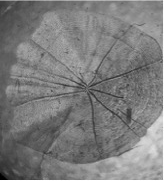
Fisheries management is used to evaluate the performance of a fishery and contributes to the the rapid identification of problems within the fishery itself. Use of fisheries management and accompanying fishery advice can identify issues before they become larger problems. however, fishery management is more than problem identification. It is used for the determination of a fisheries performance and evaluation of the health of a fishery as well as assessment of individuals within the fishery. Besides fish, management extends to the wider ecological aspects of fisheries including but not limited to, macrophyte abundance and species present, riparian margin development, spawning substrates, overhead cover, shading, refugia, water clarity, DO, etc. Fishtrack provide advice on riparian margin management for the benefit of the aquatic ecosystem and also macrophyte advice and management. We undertake invertebrate and zooplankton sampling and identification for river systems, streams and lakes, both large and small.
We provide advice on predator avoidance and predation reduction and construction of otter fencing for still water fisheries. Fishtrack provide practical advice and solutions for fisheries facing management issues, both on an advisory and practical level.


We introduce native species back into environments to enhance the overall community and restore community structure with the correct assessments and consents.

We provide comprehensive fish health assessments and parasite identification with full laboratory facilities. Our associate laboratory staff undertake commissions for health checks for fish movements and to assess fish stocks following planned re-stocking events.
Our laboratory facility also provide identification and counts for various algae species as well as for in zooplankton.
We have an established track record working collaboratively with Government Agencies, Rivers Trusts, universities, NGOs as well as Anglers and Angling groups. providing support, guidance, project design and assistance with project activities from electrofishing for fish population status or for health assessment samples to identification of impacts upon the fish community along with solutions for implementation. Yes, we implement solutions too!

In concert with conserving and enhancing native species and their habitats we undertake work to control invasive non-native species of plants and animals, in particular signal and turkish crayfish, killer shrimp and zebra mussels. We are licensed crayfish surveyors.


Fish ageing, scale analysis and growth performance
During surveys and management visits we may recommend and undertake fish sampling for the purposes of collecting biometric data. Biometric data is used to determine individual fish and species growth rates, fish age and growth performance over time as well as to evaluate and quantify the length frequency of fish populations over time. This approach enables comparisons between different fish populations regarding growth rates and population size structure, useful in evaluating a fisheries performance. This information allows fishery managers or regulators, through identification of bottlenecks or years of poor growth, to put into place plans to improve the fishery.
We routinely collect scale samples for such work as above which are also used in combination with other samples for dietary data obtained by stable isotope analysis.




Growth rate analysis (right) conducted over several years enables evaluation of fishery performance of a given species to be determined and poor years rapidly identified.
Relative year class contribution to the fishery illustrates good years of survival for a given species within the fishery